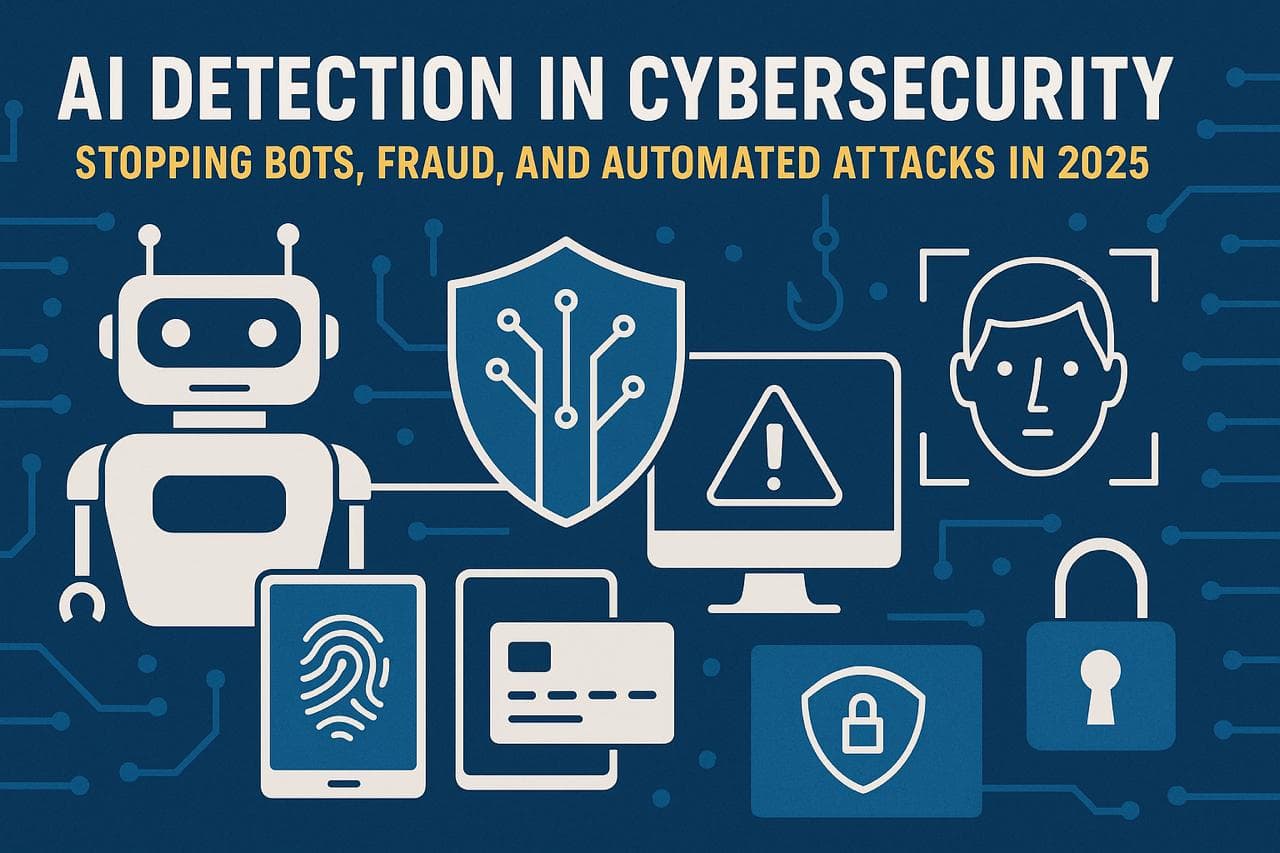
AI Detection in Cybersecurity: Stopping Bots, Fraud, and Automated Attacks in 2025
Cybersecurity in 2025 faces new risks. Hackers now use bots that act like humans. They can log in, steal data, or spread scams at scale. Fraud groups run fake sites, fake calls, and fake reviews. The line between real and fake grows thin. AI detection has become the shield. It can see deep patterns, flag odd acts, and stop harm before it spreads.
Why Bots Are Hard to Catch
Bots are not simple code anymore. Old scripts clicked fast and looked fake. Today’s bots scroll, pause, type, and move with care. They try to copy human style. A login bot may wait just the right time before a click. A scraper may switch IPs to hide. To the eye, it feels real. To old tools, it looks normal.
This makes bots hard to stop. A firewall sees traffic, not intent. A password check only knows if the code works. But AI detection can spot the small signs that reveal a bot.
How AI Detection Finds Bots
AI detection does not rely on one clue. It blends many signals to see the full act. A bot may type too smooth, with no pause. Its mouse path may be straight, not random. It may click at the same gap each time. Or one device may hold many accounts.
Each sign is small, but when joined they paint a picture. AI tools learn these signs and build risk scores. Instead of a yes or no, they say, “this act looks 90% like a bot.” That makes the block smarter and fairer.
Fraud in the Age of AI
Fraud groups now use AI to cheat banks, shops, and people. They make fake IDs with mixed data. They post fake reviews with AI text. They call with cloned voices that sound real.
AI detection helps by scanning text, voice, and image all at once. If a user logs in from a strange place, the tool sees it. If many reviews come from the same pattern, it flags them. If a call has deepfake signs, it alerts the team. In each case, the system learns from past fraud and adapts.
The Human Touch in Behavior
One way to stop bots is to study how real people act. This is called behavioral biometrics. Each person has a typing rhythm. Each swipe on a phone is unique. Mouse paths are random but human. Bots cannot copy this well.
AI learns these human prints over time. When a bot tries to fake it, the system spots the flaws. This adds a strong layer of defense, even when bots are smart.
Dealing With False Positives
No system is perfect. Sometimes good users get flagged. This is called a false positive. It hurts trust if a bank blocks its own client or if a shop locks out a real buyer.
To solve this, AI tools now use risk scores. They weigh many clues instead of making a quick yes/no call. They learn from past cases. Over time, this makes them sharper, with fewer mistakes.
Why Humans Still Matter
AI can scan fast and see what people miss. But humans still play a key role. The best systems use both. AI checks traffic and stops clear threats. Humans review edge cases. They add context, set new rules, and train the AI to improve.
This loop makes the defense stronger. It blends the speed of machines with the sense of people.
Where AI Detection Is Used
AI detection is now core in many fields. Banks use it to stop account theft. Shops use it to block fake orders and bots that hoard stock. Social media sites use it to fight fake accounts and deepfakes. Schools use it to guard against AI cheating. Even governments rely on it to protect IDs and data.
In each case the goal is the same: see what is not human, and block it before harm spreads.
What Comes Next
AI tools will keep growing. New trends shape the field. Multi-modal detection will blend text, voice, and video into one scan. Agentic AI will bring bots that plan and adapt on their own. Laws will push firms to act fast on fraud. Groups will share fraud data across borders. And zero trust models will treat no user as safe by default.
The race will not end. Hackers change. Defenders must adapt too.
Conclusion
Cybersecurity in 2025 is no longer about old walls and simple rules. Bots and fraud are too smart. AI detection blends speed, signs, and human review to fight back. It lowers risk, stops harm, and keeps trust.
As threats grow sharper, so must the tools. AI detection is not just tech. It is now the shield that guards digital life. AI detection is not just theory — it is live today. Detecting AI offers tools built for this fight, keeping bots, fraud, and attacks under control.